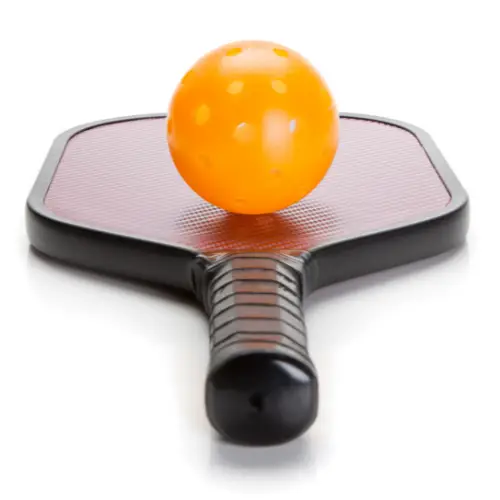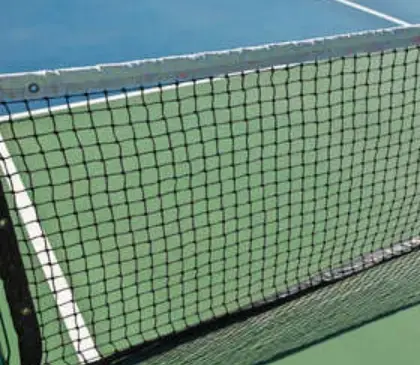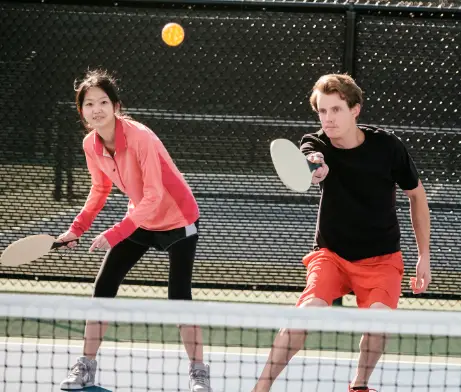As you get more advanced and watch other people (especially professionals) play pickleball, you may notice different strategies being used. Some may be obvious, like the type of shot a player takes. Others, such as stacking, can be more confusing. It’s entirely possible that you didn’t even know the name of what you saw.
Stacking is when both players on a team line up on the same side before serving and then position themselves on their favorite side of the court. You’ve probably seen this happen when one team serves and a player from the other team waits on the touchline for his teammate to return the serve.
It is called stacking because players are stacked on a particular side, rather than occupying both sides as in traditional pickleball positioning.
This article describes stacks in Pickleball. We’ll explain what stacking is, what the rules are, and when and how to use it.
What Are The Pickleball Stacking Rules?
Believe it or not, there are no current rules that prevent players from taking the side they want. Of course, other rules usually determine where players stand.
When thinking about stacking, you should know the following rules:
- Certain players must hit the serve
- The designated player must hit the return of the serve.
- Servers must not have one foot on or in the line when serving.
- The ball must bounce on his third stroke before being returned from the server.
After that, all bets are off. Players can move to any position they want to play.
How To Stack As The Serving Team
Remember, in traditional pickleball, double pickleball requires players to switch sides of the court each time they score a point. But those players don’t have to stay in that position. If you are on a serving team, you can switch sides after serving. This is where stacking comes into play.
The easiest form of stacking is when you and your partner are on a service team. The game usually starts unstacked. In other words, start the game in a “normal” position. Players who start on the right side of the pitch are on the right side and players who start on the left side of the pitch are on the right side of the left side. When a point is scored, the first server moves to the left side of the field. To stack, partners stand to the left of the first server (instead of moving to the right side of the field).
As soon as the first server hits the pickleball, each player (first server and partner) steps right and returns to their normal position.
The same applies to the second server.If the second server has to serve from the right side of the field, his partner stands to the right of the second server. After the second server hits the pickleball, each player (the second server and their partner) advances left and returns to their normal position.
Stacks can be confusing, so it’s important to keep an eye on your score. Assuming you didn’t start the stacking game, a good rule of thumb is that you and your partner should only stack if you have an odd number of points (1, 3, 5, 7, 9, etc.). The number of points – 0, 2, 4, 6, 8, 10, etc. – you and your partner must be unstacked and in a “normal” position. Also, remember that pickleball can check with the umpire (if there is one) that he is in the correct position if he gets lost on the court.
How To Stack As The Receiving Team
There’s no rule that says you have to stack on both serve and receiver, but most teams do. There are no stacks in the rules about where to stand, so you have options here too.
Most advanced teams have their non-receiving players off the field near the non-volley zone line on the side they want to cover. In the photo, you can see Christine standing off the field near his zone no-volley when I return the ball. In this scenario, after returning the ball, I move to cover the left no-volley zone and Christine moves to cover the right.
Another option is to start by standing in a more common position and have the players cross over to their preferred side of the court. You may have seen players on the non-volley line with their hands behind their backs, with their palms exposed, or their fists clenched. This shows what the partner is going to do at baseline after the partner returns the serve. (This signal is also used to indicate that the player intends to poach.)
What Are The Benefits Of Stacking?
Some might consider stacking advanced strategies that should only be used by the best players in the world. But really, stacking is a strategy that can be used at any level of play. It is important to discuss this with your partner in advance and communicate well during the game. It can be confusing at first, but it doesn’t take long to get the hang of it.
Here are some of the benefits of stacking:
- Stacking allows teams to maximize their strengths
- If the player is left-handed, stacking can keep both forehands centered
- Stacking helps hide player weaknesses
- Stacking allows for maximum mobility for teams or specific players
Conclusion
Stacking is a technique or strategy used by some doubles teams to increase the frequency with which a player has a forehand or backhand in the middle of the court. This is most commonly observed in teams that include both right-handed and left-handed players. Left-handed players typically start the game from the right or flank of the field…thus covering the center with both forehands.







